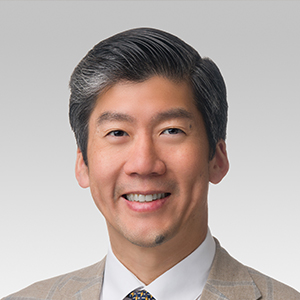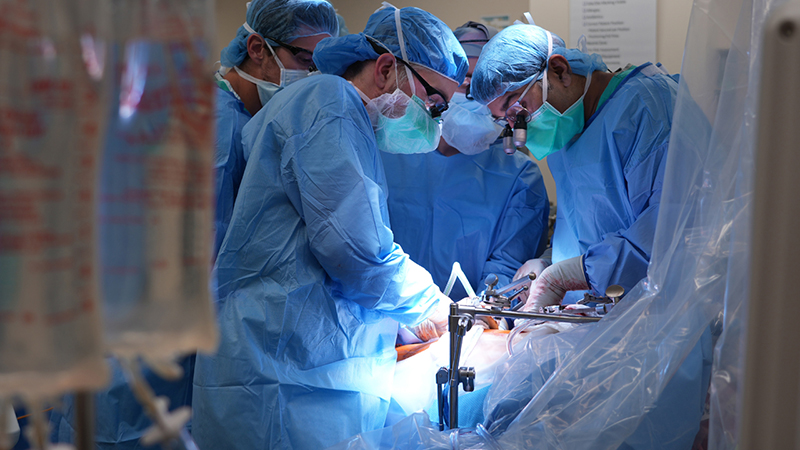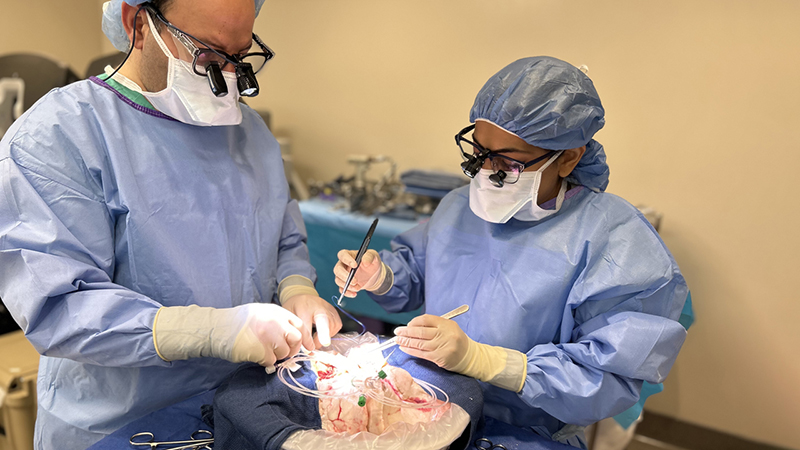The Ross Procedure: Healing Your Heart With Your Own Parts
Unique Heart Procedure Performed by Northwestern Medicine Surgeon
Published October 2023
Across the United States, it is estimated that more than 100,000 people have aortic valve disease. When you have this disease, your heart is not working efficiently and has to work harder to pump the same amount of blood to the body.
When it works properly, the aortic valve plays a critical role in your health because oxygen-rich blood passes through it and is pumped out to your other vital organs so they can function. A healthy aortic valve also prevents blood from flowing back into the heart between beats.
There are two types of aortic valve disease:
The way the Ross procedure repairs the heart is very unique.— S. Christopher Malaisrie, MD
- Stenosis (narrowing of the aorta, the vessel that carries oxygen-rich blood to your body)
- Regurgitation (leaking of blood backward through the aortic valve)
Both types can affect valve function, making you feel sick. Depending on the severity, signs and symptoms of aortic valve disease vary, but may include:
- Chest pain or tightness
- Feeling lightheaded or fainting with physical activity
- Shortness of breath, especially with exertion
- Fatigue, especially during times of increased activity
- Heart palpitations (sensations of a rapid, fluttering heartbeat)
- Heart murmur
When caught early, aortic valve disease can be treated with lifestyle modifications, such as heart-healthy nutrition, exercise, maintaining a healthy weight, smoking cessation, minimizing stress and reducing emotional distress. Medications like blood thinners are another intervention.
When aortic valve disease has progressed, there are surgical and nonsurgical options available. These range from putting a stent or balloon into the aortic valve to open it up to fully replacing the aortic valve with a prosthetic valve.
One innovative solution to repair the heart in patients who have aortic valve disease is the Ross procedure.
In the United States, there are only a few highly trained surgeons who can perform this complex procedure, one of which is S. Christopher Malaisrie, MD, a cardiac surgeon at Northwestern Memorial Hospital.
“I became a cardiac surgeon because I was fascinated by the physiology of the heart and all of its parts — from the valves to the muscles to the electrical system and functions,” says Dr. Malaisrie. “To be able to do the Ross procedure, the surgeon has to be an expert in aortic valves and pulmonary valves since we are working with both parts. The way the Ross procedure repairs the heart is very unique and leads to really compelling results.”
Repairing the Heart With the Patient’s Own Parts
The Ross procedure is a type of aortic valve replacement that was developed by a British surgeon, Donald Ross, MD, in the late 1960s. The procedure was initially considered controversial by some because of its complexity. Surgeons almost abandoned the procedure entirely in the early 2000s. However, improved surgical techniques have led to a resurgence of the Ross procedure. Over time, the technique has changed dramatically and has been adjusted for the best patient outcomes.
The Ross procedure is a translocation procedure, which involves:
- Replacing the diseased aortic valve with the patient’s own pulmonary valve, which transports deoxygenated blood to the lungs.
- Placing a human donor valve where the patient’s pulmonary valve used to be.
This translocation of the valves is possible because the pulmonary valve is shaped like the aortic valve. In fact, your pulmonary valve is the mirror image of your aortic valve, and because it is a living structure — and it is your own tissue — your body is highly likely to accept it in the new aortic position.
“With the Ross procedure, we can often expect better outcomes than we see with a mechanical valve replacement. However, by using a patient’s own tissue we are maximizing long-term valve function and eliminating the need for patients to be on blood thinners for the rest of their lives,” says Dr. Malaisrie. “After the surgery, we very closely monitor patients for the first six months, and we encourage them to exercise and follow a heart-healthy diet, but aside from that, many patients are able to go back to living their lives with minimal restrictions.”
You may be a good candidate for the Ross procedure if you are:
- Under the age of 50 with aortic valve disease that requires surgical replacement
- In otherwise good health so that your body is more likely to better tolerate and recover from the long and complex procedure
- Someone with an active lifestyle
“There are so many options to treat patients with valvular heart disease ranging from complex operations like the Ross procedure to minimally invasive operations such as a transcatheter aortic valve transplantation that can be done with no general anesthesia,” Dr. Malaisrie says. “The innovations that have come about over this past decade are truly amazing and life changing for patients.”







